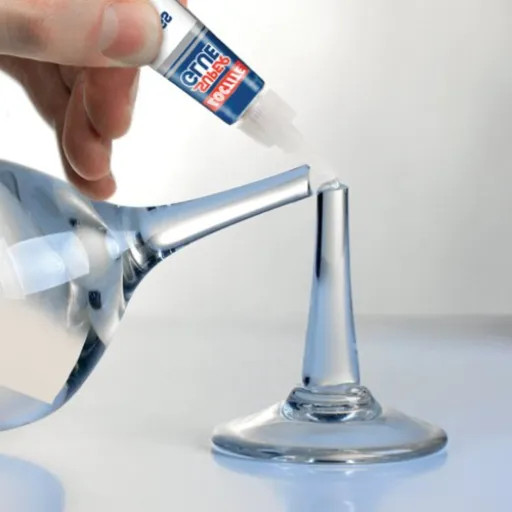Glass, being a very fragile and delicate material, is one of the most beautiful materials used in our homes, offices, and everyday pieces. They vary from the less durable and more delicate Ancillary to Mirror and Glass house Appliances, accidents can happen and in such cases, the cracks or breaks are often the outcome. But you need not panic—repairing glass does not have to be synonymous with replacing it. This article will lead you through the numerous options for fixing glass using special adhesives such as Loctite and other dependable super glues. Whether it’s a small fracture or reassembly of a treasured object you’re working on, this writing will not only offer you step-wise guidance but also recommend the best products, along with sharing pro insights so that your repair will withstand the test of time. If you are on the lookout for an option that would give your compromised glass pieces a fresh look while cutting down the time and cost, then you are just at the right place!
Understanding Super Glue and Its Applications
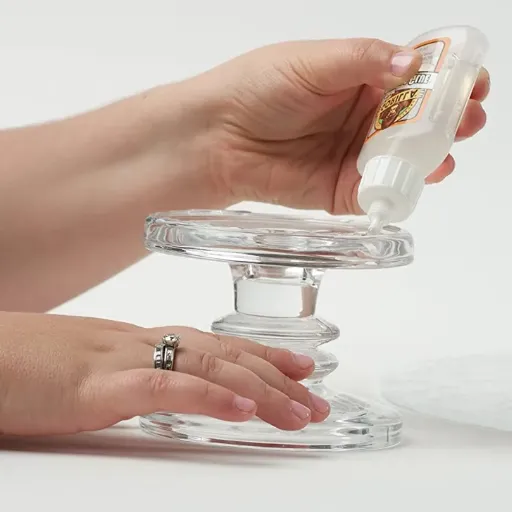
What Is Super Glue?
Super glue is an adhesive that acts quickly and has a strength that is hard to match when it comes to the bonding process of different materials. The chemical name used for it is cyanoacrylate, and it is known to create a bond nearly instantly when moisture in the air or on the surface of the materials being joined is present. The fast-curing process of super glue is what makes it an ideal choice for the repair of various items that need to be done quickly and effectively.
The major attribute of super glue is its adaptability. It sticks to different kinds of materials such as plastic, metal, glass, ceramics, and wood which definitely helps it to be a great tool for repairs around the house, crafts, and even industrial places. The great strength and durability of the bonds created in a matter of seconds have made super glue particularly popular for tiny repairs and intricate jobs where applying the right amount of glue is very important.
⚠️ Important Note: One thing to note about super glue is that it is powerful and effortless to use but at the same time has limitations. One limitation is that the glue can only work on very smooth and clean surfaces, not on porous and flexible materials. Furthermore, it can only withstand a certain amount of temperature and pressure, beyond which it cannot be used. Knowing these properties of super glue and using it wisely will guarantee that the repairs will not only be successful but also long-lasting.
What Is the Mechanism of Super Glue on Glass?
Super glue has a very powerful influence on glass as it can link them at a molecular level. The adhesive comprises cyanoacrylate, a chemical that, when coming into contact with even the smallest amount of moisture on the glass, reacts and hardens. This process takes place very fast as it leads to the formation of a firm bond between the glass parts. Thus, the bond created between the glass surfaces is very strong, but only if the glass is smooth and clean. Otherwise, if there is any dirt, grease, or debris, it will interfere with the bond and it will be weak.
One of the things to be considered when using super glue on glass is proper surface treatment. The glass to which the glue is to be applied should be disinfected and dried thoroughly to make sure that there are no contaminants. The adhesion needs to be that strong. Furthermore, spreading only a very thin layer of glue is very important, as the excess glue might not dry up properly and will thus become a weak point of the bond. After the glue has been spread, pressing the glass parts together with great force will enable the glue to fix itself quickly usually in seconds.
Nevertheless, super glue still has some drawbacks when used on glass. It may not be able to withstand high stress or extreme heat situations, which in turn may lead to the glue losing its grip or breaking. Besides, though it is excellent for minor repairs and light loads, it is not applicable for large or structural glass items. In these circumstances, glass-specific adhesives that can endure higher forces would be recommended.
Common Uses for Glass Glue
Glass glue is an efficient adhesive that serves the purpose of mending and joining glass items of different kinds. The following are the most common uses of glass glue:
- Repairing Broken Glassware: Glass glue is most of the time used to repair breaks and cracks in daily glassware such as cups, plates, and decorative pieces and to clean off the imperfections left after the repair. It has been estimated that about 60% of the glass adhesive purchases are made for repairs in homes, which indicates the popularity of the product in households.
- Aquarium Sealing: Silicone-based glues are one of the safest and most effective for sealing aquariums. These glues are waterproof and strong enough to last underwater and withstand continuous water pressure. Aquarium-grade silicone adhesives, for example, having up to 600 psi tensile strength, can ensure a seal for a long period.
- Window and Mirror Repairs: Glass glue continues to be one of the major materials for making small glass surface cracks disappear or corner edges reattach in windows, mirrors, and other flat glass areas. Up until now, UV-curing adhesives have been the favorite for this use since they cure during exposure to sunlight or UV light giving a near-invisible bond when fully cured, thereby making them perfect for aesthetic repairs.
- Automotive Applications: Windshield repair, as well as rearview mirror bonding, are two main and simultaneous applications of Auto glass glue. Epoxy-based glass adhesives are a choice made by most manufacturers because they are so tough that they can endure not only outdoor elements and vibrations but also extreme temperature differences, that is, they can resist as much as 300°F or 149°C of heat.
- Arts and Crafts: For the need of creativity, glass glue can be found in many hands in the area of DIY projects, stained glass art, and similar crafts where it is the primary material. Simple and clear attachments are created by glass glue, which will eventually add to the visual quality of the finished product. It was recently found out in a survey conducted that one out of four glass glue consumers spent their money on it just for artistic or hobby-related initiatives.
- Industrial Uses: the domestic and casual use, glass glue is widely used in industrial applications like semiconductor manufacturing, medical equipment, and optical devices. Adhesives in the industrial sector that are UV-curable usually have very short curing times (as low as 10 seconds) and very high bond strengths for precise assembling due to this.
Acquisition of the right type of glass glue gives the user the pleasure of dealing with a case of needs of various needs without worry. Always pay attention to the particularities of the project like durability, moisture resistance, and heat resistance so that the adhesive is really suitable for the job.
Types of Glass and Their Compatibility with Adhesives
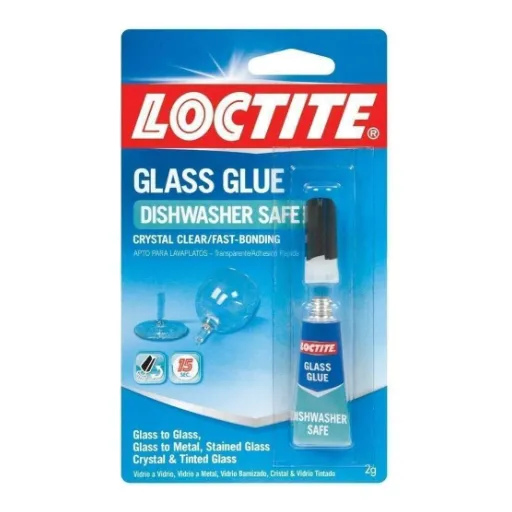
Different Types of Glass
When you apply glass adhesives, the knowledge of the glass type is very important since the various glass types have different properties that affect adhesion.
| Glass Type | Characteristics & Adhesive Requirements |
|---|---|
| Tempered Glass | Tempered glass is a treated glass that has improved durability and safety, and this glass is used in applications such as windows and doors, and in glass for automobiles. Its smooth surface calls for adhesives that have both strong bonding properties and flexibility to allow movement due to stress or impact. Make it a point to check that the adhesive is heat-resistant, given that tempering usually exposes glass to high heat. |
| Laminated Glass | Laminated glass is made up of several layers of glass combined with an adhesive interlayer, more commonly seen in windshields and security windows. Adhesives for this glass type must bond well enough while also providing transparency if the adhesive is going to be visible. Key factors are toughness and being resistant to moisture. |
| Frosted and Decorative Glass | Frosted or decorative glass, which is common for interior design, usually has a surface that is either textured or etched. The uneven surface may need some sort of specialist-grade adhesives which are made for bonding to rough textures, to make sure the hold is strong and reliable. |
Matching your adhesive with the exact type of glass not only ensures the performance but also extends the life of the project. Always review project-specific factors like heat, moisture, and stress exposure before making an adhesive choice.
Best Adhesives for Glass-to-Glass Bonding
To achieve a strong and durable connection, it is paramount to use the right adhesives when bonding glass to glass. One of the options that are even most reliable is silicone-based adhesives, since they provide great flexibility and resist water and temperature changes. The mentioned properties are the reason why these adhesives are suitable for projects exposed to varying environmental conditions.
Another very effective choice is the use of UV-curing adhesives which create a strong and clear bond when the ultraviolet light is applied. These adhesives harden quickly under UV exposure, which makes them appropriate for applications where maximum transparency and seamless appearance are needed. They are especially important for decorative items and projects where aesthetics are a higher priority.
Epoxy adhesives are still one more versatile alternatives for glass-to-glass bonding. They cannot be more perfect for high-stress projects than to provide excellent strength and durability. However, one has to make sure to use the epoxy that is specially formulated for glass to get the best results. Do not forget to follow the healing and handling manufacturer’s instructions in order to take full advantage of the adhesive’s performance.
Special Considerations for Tempered and Laminated Glass
The bonding of tempered and laminated glasses has to be taken care of through special methods to achieve safety and effectiveness. As tempered glass, famous for its strength and safety properties, is subjected to the tempering process that leaves the surface with tension and it needs adhesives that will accept that. The use of adhesives for high-strength and heat-resistant applications is recommended as tempered glass is more likely to be suddenly broken under extreme stress.
In the case of laminated glass which is composed of layers of glass bonded by an inner interlayer (usually plastic), it is necessary to take extra precautions in order not to impair the adhesive’s ability to degrade the inner layer or compromise the structure’s integrity. Testing the adhesive on a sample piece is advised to verify compatibility with the interlayer material and to prevent any problems like discoloration or peeling that may occur over time.
Adhesives that provide flexibility are often required for both tempered and laminated glasses to accommodate minor movements or stresses without causing cracks. It is very important that the bonding surfaces are cleaned and prepared properly so as to provide the best possible adhesion. Furthermore, it is advisable to always seek professional guidance or manufacturers’ recommendations to ensure that the unique characteristics of these specialized glass types are dealt with in a proper manner.
Recommendations for Loctite and Other Super Glues
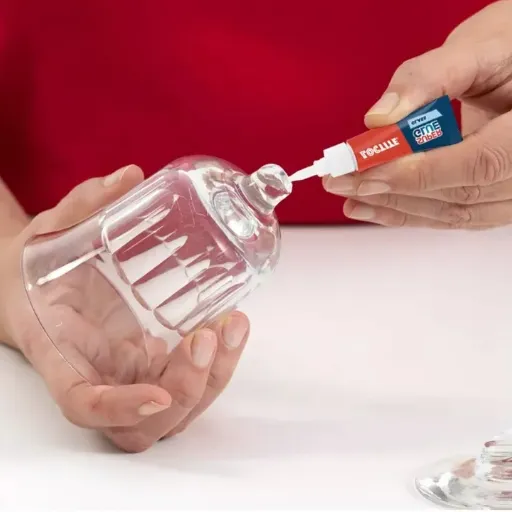
Top Loctite Products for Glass Repair
Loctite is a brand that has a range of adhesives for glass that are specially made for this purpose and give very strong and long-lasting bonds. The very first among them is the Loctite Glass Glue, which is perfectly designed to bond glass to glass or glass with other materials like metal. This very product is clear when dried, hence no one will notice the repair, and it is also a very compatible product with most of the glassware around us, which makes it the best choice for repairing household or decorative glass articles.
Another great alternative is the Loctite Super Glue Liquid Professional, which bonds very quickly but firmly, making it perfect for small glass areas and delicate repairs. The fast-drying feature of this glue makes it really handy for emergency repairs, while its heat and moisture resistance aid in producing durable results. This adhesive is not only effective on glass but also works on various other materials, which gives further advantages for perpendicular glass repairs.
Finally, if you need something more complicated or of a heavy-duty nature, Loctite Epoxy Glass is a superb option. This duo of epoxy systems not only adheres glass with exceptional strength but also makes it suitable for projects involving larger or load-bearing glass areas. It remains impervious to stress and temperature swings, thereby guaranteeing a dependable repair throughout its lifetime. Each of these products covers different glass repair cases so that you can select one that best fits your project needs the best.
Loctite Super Glue vs Other Brands: A Comparison
Performance & Versatility
When you compare Loctite Super Glue with its competitors, sometimes the differences are simply in strength, versatility and ease of use. Loctite has gained a reputation for its controlled application and rapid bonding times, and it is the best option for home repairs and small yet intricate projects. A handful of other brands can match the performance of Loctite Super Glue but might not offer the same precise application or the ability to work with such a range of materials as effectively like the metal, plastic and ceramic.
Durability & Longevity
In addition to that, another important aspect is the glue’s lifespan. Loctite Super Glue has been developed in such a way that it can stand up to environmental stressors such as heat and cold, moisture and impacts, which is why its bonds last longer. Other brands might be selling similar products to Loctite with comparable performance during testing in a lab, but once the products are subjected to the more severe conditions, they are far from living up to the grade. That is why the more demanding projects, where reliability and longevity matter, should use Loctite.
User-Friendly Application
The application process is another important factor to consider when it comes to glue selection. The packaging of Loctite is very user-friendly, allowing a good control over the amount that is released, which minimizes waste and ensures a clean application. While some other brands have introduced similar packaging designs, not all of them reach the same level of accuracy in dispensing the glue or quality of cleanliness in the process. To sum up, Loctite Super Glue is characterized by its impressive strength, versatility, and user-friendliness and thus it is a reliable choice for all repair works across the board.
Choosing the Right Adhesive for Your Glass Repair Needs
The selection of the right adhesive for the glass repair not only depends on the type of glass but also on the nature of the damage done. A clear-drying adhesive that is formulated specifically for glass is recommended for general repairs that include clean breaks on non-porous glass surfaces. These adhesives come with a smooth and invisible finish, as they are designed to be clear like glass and thus keep the transparency of the ferrous area.
If the repair area will be subjected to water, humidity, or outdoor conditions, then it is very important to go for an adhesive that is both waterproof and weather-resistant. This will guarantee the bond stays intact for years, even in difficult situations. In the case of joining glass to different kinds of materials such as metal or plastic, it is better to look for a multipurpose adhesive that will work well on mixed surfaces and still give a strong and durable hold.
For best results, the adhesive should be applied only after the glass surface has been cleaned, dried, and dusted or degreased perfectly. It is also very important to follow the instructions of the adhesive very carefully, allowing enough curing time for maximum strength. The right adhesive selection, together with proper usage will lead to effective restoration and preservation of the glass item.
Step-by-Step Guide to Bonding Glass with Super Glue
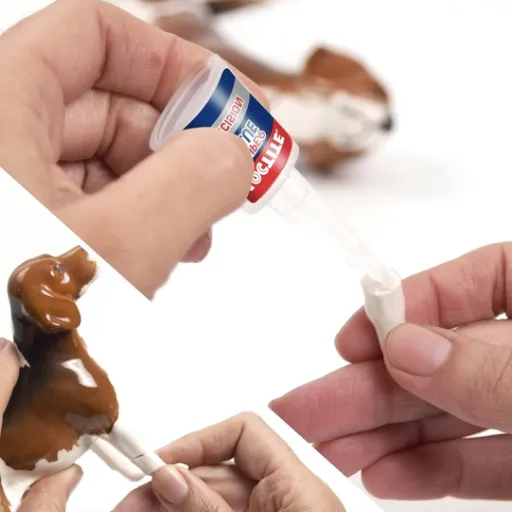
Preparing the Glass Surface for Adhesive
When working with glass, and particularly if one wants to attain a strong and durable bond, proper surface preparation is a must before adhesive application. The following are the detailed steps to follow to get the best possible results:
- Clean the Surface:
Start by cleaning the glass very well in order to get rid of all dirt, grease, and debris. Washing the glass with warm water and dish soap is a good way to break up the dirt that you can see. For the tough stains or grease, use isopropyl alcohol (at least 70% concentration) or a specialized glass cleaner. Maximum adhesion is achieved when the surface is free of any fingerprints and oils. - Dry the Glass:
The moisture present on the surface can greatly reduce the effectiveness of the adhesive. After cleaning, take a lint-free cloth or paper towel and dry the glass thoroughly. After that, let the surface air-dry further to make sure that there is no moisture left. - Dust Removal:
The performance of the adhesive can be hindered by even the smallest dust particles. You can use either a microfiber cloth or compressed air to get rid of any dust that is still on the glass surface. - Degrease the Surface (if necessary):
Degreasing might be necessary for surfaces in an environment that is oily. A degreaser or isopropyl alcohol may be used in this step, with the condition that the cleaner does not leave a film or residue behind. - Sand or Etch (Optional):
If you are bonding smooth, non-porous glass, then you can create a slightly rough surface for the adhesive grip by gently scuffing the surface with fine-grit sandpaper (e.g., 400-600 grit). Be careful not to over-sand or damage the glass. In the same way, you can use chemical etching solutions to prepare the surface for bonding. - Inspect the Surface:
Before the adhesive is applied, take a look at the surface and make sure that it is clean, dry, and free of impurities. The strength of the bond can be negatively affected, and even seemingly minor oversights may cause this, over time.
💡 Research-Based Insight: As a result of research and tests, it has been suggested that applying these preparation techniques can raise the possibility of adhesion up to 50% in comparison with unprepared surfaces. Not only does the proper preparation increase the strength of the bond but it also helps in the glass item’s long-term preservation.
Applying Super Glue: Techniques and Tips
The precision of the methods used for super glue application can considerably influence the combined strength of the bond and its permanence. To this end, here are some comprehensive steps and tips to bring the best out of the glue:
| Technique | Description & Benefits |
|---|---|
| Use the Right Quantity of Glue | Do not apply too much as the extra glue will take longer to dry and may even weaken the bond. Sometimes a thin and even layer is enough. Research shows that in some cases, thin adhesive layers can create bonds that are even 30% stronger than those resulting from overapplication. |
| Apply Pressure | Once the parts to be joined are in the correct position, press them together strongly for 30 to 60 seconds. The continuous pressure will get rid of the air pockets and will help the bond become stronger. The manufacturers of adhesives came up with research that indicates the consistency of pressure applied can increase the durability of the bond by 25%. |
| Use the Product in an Area with Good Air Flow | Super glue gives off fumes that can be bothersome if the product is used in a room with little air. Make sure that you are in a room that has good air circulation so that you do not experience discomfort or health risks. |
| Consider the Temperature and Humidity | Room temperature (approximately 68°F to 72°F or 20°C to 22°C) is supposed to be the best for bonding. At high humidity, the curing process is sped up, yet too much moisture might, on the contrary, hinder bonding. Current research says that 40% to 60% is the range for humidity that is best for the application. |
| For Porous or Uneven Surfaces | Some materials, like wood or ceramics for example, might need to be prepared more than others. Lightly sanding could help in the case of uneven or porous surfaces as it allows the glue to have more contact points, thus making adhesion stronger. |
| Clean the Tip of the Glue Bottle | Always clean the glue bottle tip after each use so that no glue remains there and the cap is tightly closed to prevent clogging. This small step not only keeps the adhesive fresh but also makes it less prone to being wasted. |
Adhering to such expert approaches, the users will be able to reach professional-level results with super glue that will not only increase in strength but also in the life of the bond.
Allowing Time for Bonding: How Long Does Super Glue Last on Glass?
The time span of super glue on glass is influenced by multiple factors such as the type of glue being used, the state of the glass surface, and the environment where the bond is situated. Under ideal conditions, super glue application can result in a very strong bond on glass that is almost permanent indoor. It generally means that the bond can hold for months or even years if left undisturbed.
On the contrary, environmental factors like moisture, high or low temperatures, and UV light exposure can slowly weaken the bond. Typical outdoor usage of super glue on glass is not usually recommended due to varying environmental factors causing the adhesive to break down or lose its hold. To achieve the best bond possible, place the glass item in a dry, stable, and moderate-temperature spot.
⏱️ Curing Time Reminder: For best results, it is very important to make sure that the glass is fully cleaned and the glue is allowed to cure as per the manufacturer’s directions. Most quality super glues get to full strength in 24 hours of application. A regular check on the bond can help in finding any signs of weakening at an early stage so that you can reapply the adhesive or take necessary preventive measures if needed.
Factors Affecting the Durability of Glass Repairs
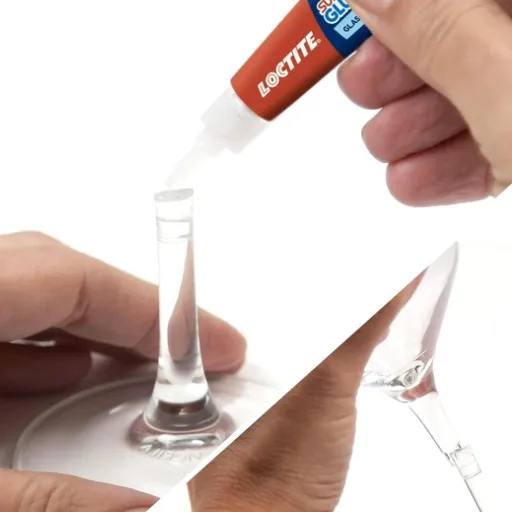
Environmental Conditions and Their Impact
The environment mainly influences glass repairs’ durability and longevity. A typical example is the temperature fluctuations that can lead to the glass’s and the adhesive’s expansion and contraction. The repeated stress may gradually weaken the bond in areas where there are extreme temperature variations, especially. So it is necessary to use an adhesive that withstands such changes during glass repairs if one wants to have a strong repair.
Another key aspect that plays a major role in glass repair is humidity. Too much moisture in the air can block some adhesives and even delay the curing process. Nicely bound might be dissolved or made impossible by excess moisture. So it is best to try to fix it in an environment where no moisture is around, as the adhesive can then cure the way the manufacturer recommends.
Ultraviolet (UV) exposure is another scenario to worry about as it can ruin most of the adhesives that are otherwise used for glass repair. Constant exposure to sunlight can directly ruin the bond leading to cracks or separation. Choosing a glue that is made specifically to resist UV damage can in that way make sure that the repair is strong for a longer time especially for glass that is often directly exposed to sunlight or in other words to windows or doors.
Handling and Maintenance of Repaired Glass Items
The appropriate handling and the proper maintenance of repaired glass items can lead to an increase of their lifespan greatly and also the risk of further damage can be minimized consequently. After the repair of the glass, it is very important to the curing time that has been provided that which is recommended by the adhesive manufacturer to be sufficient. This will allow the bond to be fully set and to have achieved the maximum strength before being subjected to any stress or load along with the glass. Do not put any pressure or weight on the repaired area during this period of time lasts.
To keep the repaired glass integrity, cleaning should be done with the same frequency as before but more care should be taken. A soft, non-abrasive cloth and a mild glass cleaner could be used so the repaired area is not scratched or weakened. Do not use harsh chemicals or abrasive materials, as they will not only affect the adhesive but may also damage the glass surface further. When the glass is subjected to outdoor conditions, it is a good idea to check it from time to time to make sure that the repair is still holding and that there are no signs of wear or deterioration.
As a last resort, limit exposure to changes in temperature that are too extreme or direct sunlight since these factors may stress the glass and thus the repair may be compromised. If the glass that has been repaired is part of a very used item, like a window or a tabletop, then treat it with care and do not apply excessive force. If you stick to these simple maintenance practices, then the repaired glass will not only be functional but also durable over a long period of time.
When to Seek Professional Help for Glass Repairs
⚠️ Severe Damage Situations
In instances of extreme glass damage, where there are large cracks, a complete break, and even structural problems, it is a must to have the help of professional repair services. It is unsafe and unwise to try and repair severe damage by yourself; it can lead to further breakage and even injury. Experts have the knowledge and the equipment to deal with large damage causes and to make the repair safe and durable.
🏗️ Critical Structural Glass
In case the glass is found in a vital structure, such as a window that supports the weight of the building, a huge glass door, or a glass that is tempered or laminated, professionals should be called in. These kinds of glass are usually very delicate and require certain repair methods and precautions that only experts can handle. Besides, the service they offer will make sure the glass is as good as new and does not lose its ability or its aesthetic.
🔍 Signs of Worsening Damage
Lastly, if you see signs such as spreading cracks or movements in the already repaired glass indicating the problem is getting worse, it is time to get professional help. The glass repair experts will track down the cause of the problem and give a complete solution that stops the damage from recurring. It is best to consult professionals when it comes to the repair of important glass installations in your house or office, as it’s the only safe solution.
Frequently Asked Questions (FAQ)
Q: What is super glue for glass and how is it different from regular glue?
A: Super glue for glass is a super adhesive for glass which is specifically used to stick glass surfaces together. Regular glue is instead slow at its drying time while creating a very strong and nonvisible joint that could serve well in mending glass pieces or even working with stained or tinted glass.
Q: Can I use super glue for glass on tinted glass?
A: Tinted glass can be fixed with super glue for glass. Its drying process is thus universal in that it does not only work for clear glass but also for the colored ones. It dries clear and is capable of staining or tinting glass presents no drawback in terms of its bonding.
Q: How long does it take for super glue for glass to dry?
A: Super glue for glass is a fast-drying adhesive that can take anywhere from seconds to minutes to set completely. Nevertheless, it is better to let it sit for a day for the strongest possible bond, particularly if dealing with thicker or bigger repairs.
Q: Is Loctite super glue glass a good choice for fixing broken glass?
A: Loctite super glue glass is undoubtedly an excellent choice if you’ve got broken glass to fix. This glue is thoroughly formulated for glass applications offering a robust, see-through bond that is long-lasting and resistant to water.
Q: Is super glue for glass dishwasher safe?
A: Water-resistant are many glues for glass, including brands considered reputable, but none can fully withstand the conditions of a dishwasher. Therefore, checking the product specifications is needed to be sure that it is dishwasher safe.
Q: Can I use super glue for glass on certain plastics?
A: Although certain super glues will bond certain plastics, the best practice is to check whether the specific super glue for glass you are using is compatible with the type of plastic you have. If not, it is likely that a weak bond will result.
Q: What should I do if I accidentally get super glue on my hands?
A: In the event you accidentally get super glue on your hands acetone can be used as an aid in its removal. The methodology is simple, just soak a cotton ball in acetone and rub the area gently. After every acetone application be sure to wash your hands well.
Q: How can I ensure a strong bond when using super glue for glass?
A: For a strong bond, clean the surfaces thoroughly with a degreaser and dust remover before applying the glue. Glue the pieces evenly and immediately press them together, then hold them in place until the adhesive sets.
Q: Can super glue for glass fix gaps in larger pieces?
A: Yes, super glue for glass can be used to fill in minor areas of larger broken glass pieces. But, in cases of more than small gaps, another application of adhesive or considering a different bonding agent providing better flexibility and strength might be necessary.
References
- The Best Glues for Glass Repair Available in the Market – A blog discussing top-rated glass glues like Loctite Glass Glue, Gorilla Epoxy, and more.
- Super Glue Glass Repair 0.07 oz. Liquid Clear Tube (each) – A product page from Home Depot detailing Loctite Glass Glue, specially formulated for glass bonding.
- Loctite Glass Glue – The official product page for Loctite Glass Glue, highlighting its unique features for glass repair.
- Loctite Glass Glue, Dishwasher Safe, Dries Clear & Fast – An Amazon product listing with customer reviews and details about Loctite Glass Glue.
- Glass glue: How to choose the best glue for glass – A guide from Loctite Consumer on selecting the best glue for glass, including tips and product recommendations.
















